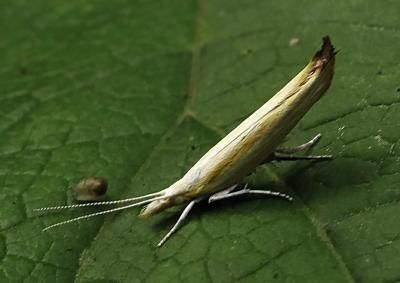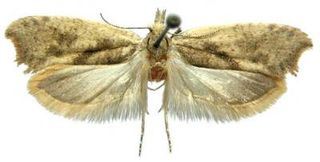
2 Strange Moth Species Revealed in Russia

Two new species of previously unknown moths have been discovered in the Russian Far East, northeast of Mongolia. The insects strike a unique pose when resting, sticking their hind section into the air and extending their antennae forward onto the ground, or the surface of a leaf, according to a new study describing the animals.
As larvae, the moths form strange, cradlelike cocoons from leaves before hatching.
The moths may have gone undiscovered for so long because they are difficult to collect; unlike most moths, they don't usually fly toward lights, a common method of capturing insects for identification, according to the study, published recently in the journal ZooKeys.
In the study, the authors describe the bodies of the new moths, as well as their genitals, which differ enough to make them unique. Scientists often examine genitals to distinguish between different types of moths and other insects.

The new species are both part of the genus Ypsolophid, and have been named Ypsolopha melanofuscella and Ypsolopha straminella. There are now a total of 30 species known in this genus in Russia, accounting for a fourth of the worldwide total in this group.
"Studying the species diversity in East Asia as a whole and in the Far East of Russia in particular is an important endeavor … only the first step in a long row of scientific tasks towards forming a primary database for further theoretical reconstructions and conclusions for the benefit of biodiversity conservation," said Margarita Ponomarenko, a researcher at the Far Eastern Branch of the Russian Academy of Science, in a news release describing the study.
Email Douglas Main or follow him @Douglas_Main. Follow us @OAPlanet, Facebook or Google+. Original article on LiveScience's OurAmazingPlanet.
Sign up for the Live Science daily newsletter now
Get the world’s most fascinating discoveries delivered straight to your inbox.











